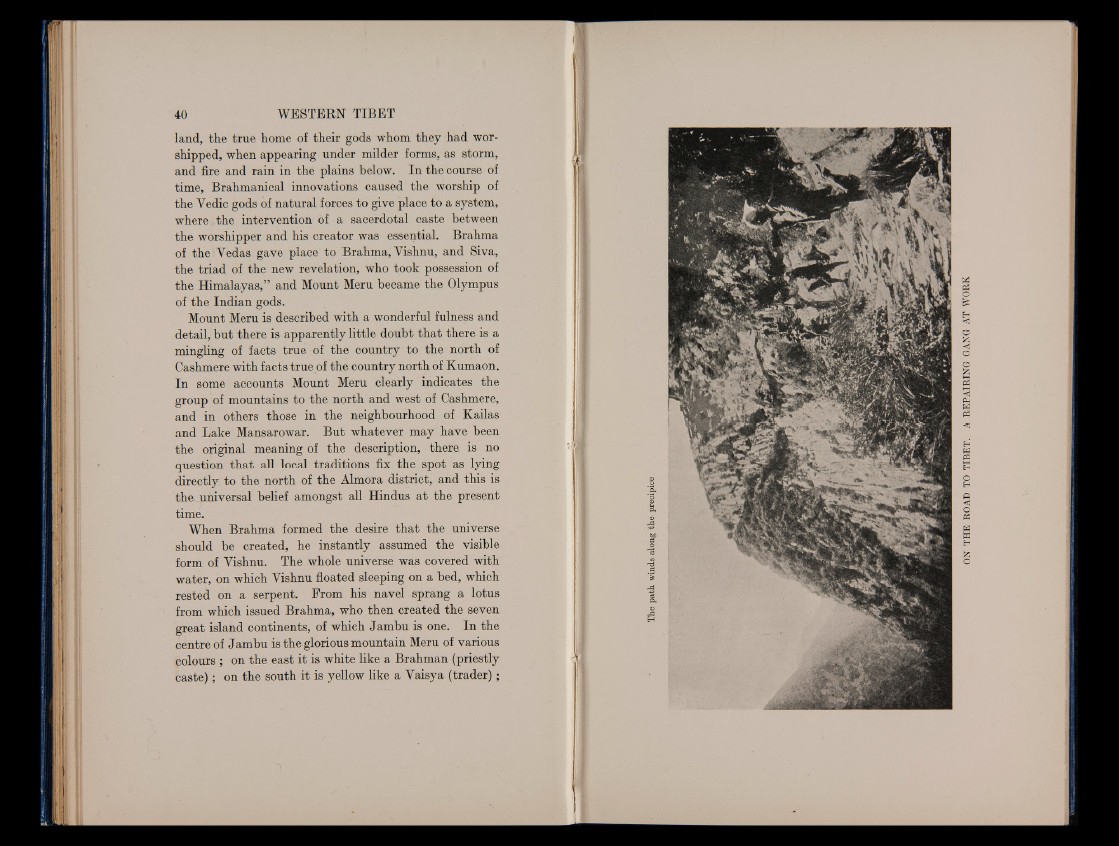
land, the true home of their gods whom they had worshipped,
when appearing under milder forms, as storm,
and fire and rain in the plains below. In the course of
time, Brahmanical innovations caused the worship of
the Yedic gods of natural forces to give place to a system,
where the intervention of a sacerdotal caste between
the worshipper and his creator was essential. Brahma
of the Vedas gave place to Brahma, Vishnu, and Siva,
the triad of the new revelation, who took possession of
the Himalayas,” and Mount Meru became the Olympus
of the Indian gods.
Mount Meru is described with a wonderful fulness and
detail, but there is apparently little doubt that there is a
mingling of facts true of the country to the north of
Cashmere with facts true of the country north of Kumaon.
In some accounts Mount Meru clearly indicates the
group of mountains to the north and west of Cashmere,
and in others those in the neighbourhood of Kailas
and Lake Mansarowar. But whatever may have been
the original meaning of the description, there, is no
question that all local traditions fix the spot as lying
directly to the north of the Almora district, and this is
the universal belief amongst all Hindus at the present
time.
When Brahma formed the desire that the universe
should be created, he instantly assumed the visible
form of Vishnu. The whole universe was covered with
water, on which Vishnu floated sleeping on a bed, which
rested on a serpent. Erom his navel sprang a lotus
from which issued Brahma, who then created the seven
great island continents, of which Jambu is one. In the
centre of Jambu is the glorious mountain Meru of various
colours ; on the east it is white like a Brahman (priestly
caste); on the south it is yellow like a Vaisya (trader);